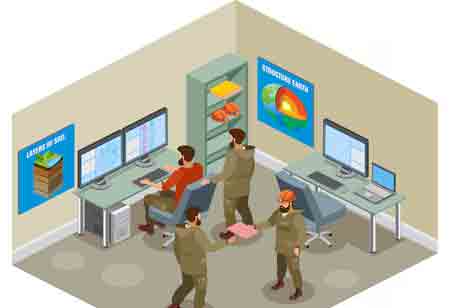THANK YOU FOR SUBSCRIBING
Be first to read the latest tech news, Industry Leader's Insights, and CIO interviews of medium and large enterprises exclusively from Gov CIO Outlook
THANK YOU FOR SUBSCRIBING

By
Government CIO Outlook | Friday, October 17, 2025
Stay ahead of the industry with exclusive feature stories on the top companies, expert insights and the latest news delivered straight to your inbox. Subscribe today.
Fremont, CA: Natural and man-made disasters can sometimes lead to the loss of lives, infrastructure, and communities. How we have responded to such calamities has been significantly changing in recent times due to improved technological development, better data utilization, and further knowledge of community resilience. Several emerging trends are, therefore, shaping the future of disaster response in times of growing challenges in managing disasters. These trends are set to increase efficiency, coordination, and the saving of lives. This article discusses five key trends that are changing disaster response.
Technology Integration in Crisis Management
Technology in Disaster Response is increasingly being utilized, including drones for aerial assessments and social media for updating real-time information. Drones are fast in helping assess damage and find survivors, while mobile apps and AI tools aid in decision-making. Advanced mapping software and AI tools also predict disaster impacts and coordinate efforts more effectively, making technology a crucial tool in crisis management.
Better Communication Systems
Disaster Response focuses on enhancing communication technologies, especially in areas isolated from the rest of society where traditional methods are futile. Satellite systems, radio networks, and other messaging platforms are used to keep the responders and members of the public informed in real-time. The engagement of apps for reporting a location, emergency messaging, and safety updates enhances the effectiveness of disaster teams. International organizations are putting together standardized protocols to ensure easier collaboration during crises.
Data-Based Decision Making
Big data revolutionizes disaster response by providing immediate insights into disaster scope and nature. Utilizing sensors, satellites, and social media, emergency responders can use weather forecasting models and real-time data on infrastructure damage to prioritize areas needing immediate attention. This data-driven approach improves response efficiency and resource allocation, avoiding delays.
Focus on Community Resilience
Disaster response evolved from immediate relief and recovery to building community resilience by preparing communities with necessary tools and knowledge, such as emergency procedures, first aid kits, and local response teams. This has improved recovery rates so that communities can weather and recover from disasters without a long-term impact.
Integrated and Interagency Response
This new trend in disaster response involves interacting between agencies from the governmental and non-governmental sectors to understand the nature of modern disasters. Such an approach would lead to better-organized and more effective responses through efficient resource sharing and expertise sharing. Usually, the local communities and organizations give important insights into specific needs within the region.
I agree We use cookies on this website to enhance your user experience. By clicking any link on this page you are giving your consent for us to set cookies. More info



